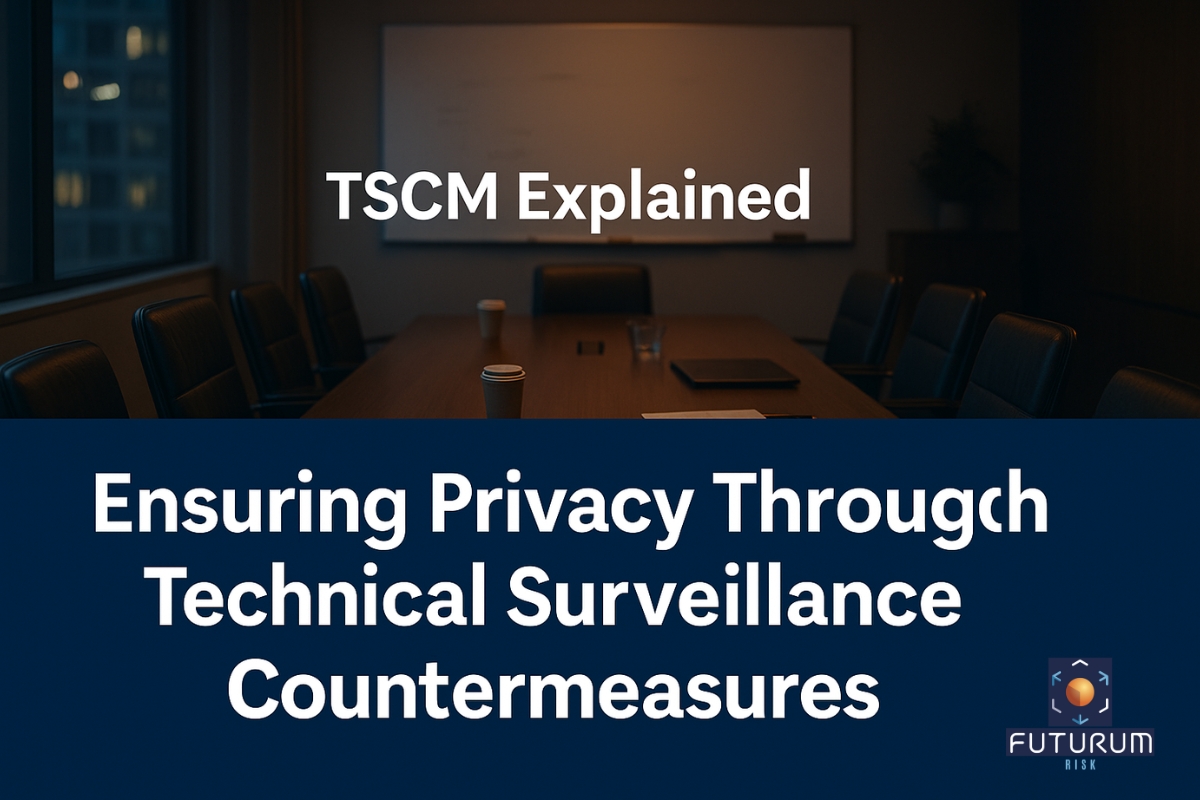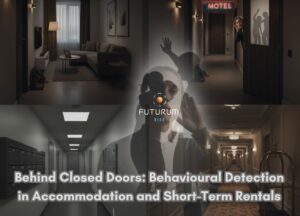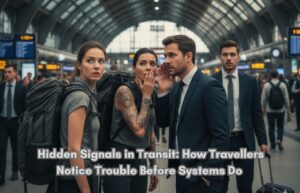Privacy is no longer guaranteed by firewalls alone. Hidden microphones, covert cameras, and GPS trackers are cheap, discreet, and increasingly common. Our latest blog breaks down Technical Surveillance Countermeasures (TSCM), often called bug sweeping, explaining what it is, why it matters, the tools involved, and real case examples that show the risks in practice.
Bug Sweeping Explained: Why Technical Surveillance Countermeasures (TSCM) Protect Privacy
The boardroom is quiet after a long strategy session. The whiteboard is clean, the coffee cups are gone, and the only sound is the aircon ticking over. Everyone leaves, certain that the plan is safe. The next day, a competitor hints at details nobody else should know.
Most leaders think first about digital security. Strong passwords, cloud permissions, and firewalls all matter. Conversations do not live online alone. They happen in rooms, vehicles, hotel suites, and temporary offices. These spaces are vulnerable to hidden microphones, covert cameras, and GPS trackers.
Technical Surveillance Countermeasures (TSCM) often called bug sweeping, is the discipline of detecting, analysing, and neutralising those threats so that private conversations remain private.
Not every person will need a professional sweep of their home or office. TSCM applies to specific circumstances and industries where sensitive information carries real consequences if compromised. Executives involved in mergers or acquisitions, legal teams managing privileged cases, government officials handling classified material, and high-profile individuals who may attract unwanted attention all face elevated risk. For these groups, protecting the physical environment is just as important as securing digital systems. If you operate in spaces where information equals power, then this topic is worth your attention.
Why TSCM matters now
Surveillance devices are smaller, cheaper, and more effective than they were a few years ago. A microphone can sit inside a plug adapter. A camera can hide behind a smoke detector lens. A tracker the size of a matchbox can attach to the underside of a car. Many devices transmit wirelessly over WiFi, Bluetooth, or GSM and blend into the normal noise of a modern workspace.
Installation no longer requires specialist skills. Devices can be purchased online, delivered quickly, and placed by anyone with a few minutes of access. The risks are real. Confidential negotiations can leak to competitors. Legal privilege can be compromised. Personal privacy can be invaded. Unlike cyber breaches, which often leave digital traces, illicit surveillance can remain invisible until harm is done.
Frequency basics that matter in TSCM
TSCM pays close attention to radio frequency behaviour. Understanding frequency helps explain how devices communicate and how they are found.
- What frequency means and why it matters
Frequency is the number of times a wave repeats per second and is measured in Hertz. Hidden devices use specific frequency bands to send information. A sweep looks for unusual patterns in those bands that do not belong in the room.
- Key ranges used in detection and why they are checked
Low-frequency and very high-frequency (VHF) bands carry different types of signals to ultra-high (UHF) and microwave bands. Active bugs may use anything from lower bands through VHF and UHF to microwave-based transmissions. Systematic scanning across these bands helps expose transmissions that sit outside the normal fingerprint of the environment.
This simple foundation explains why professional sweeps rely on measurement rather than guesswork.
Inside a professional sweep
A sweep is a structured investigation that combines technology, physical inspection, and expert analysis. It is not a single device waved around the room.
- RF spectrum analysis with full follow-up
The environment is scanned across LF (Low Frequency), VHF (Very High Frequency), UHF (Ultra High Frequency), and microwave ranges to identify transmissions that do not belong. Anomalies are logged and compared with known baselines. Suspicious signals are traced, correlated with location, and investigated until their source is understood.
- Non-linear Junction Detection for dormant electronics
A Non-Linear Junction Detector, NLJD, is a device used to find hidden electronics even when they are switched off. All electronic circuits contain components that react in a unique way when exposed to a special radio signal. The NLJD sends out that signal and listens for the response. If a hidden microphone, camera, or tracking chip is embedded inside furniture or walls, the NLJD can reveal it even if the device is not transmitting.
- Thermal imaging and endoscopic inspection to see what is concealed
A thermal imager identifies heat signatures that indicate hidden electronics behind walls, ceilings, or inside furniture. An endoscope allows inspection of conduits, ceiling voids, and small cavities without dismantling the structure. These tools confirm what the signal data suggests and locate devices precisely.
- Wireless technology checks that separate normal from hostile
WiFi networks are mapped and verified so that rogue access points are not mistaken for legitimate infrastructure. Bluetooth activity is assessed for unknown beacons or devices that should not be present. GPS behaviour is reviewed in vehicles and assets so that trackers do not quietly report movements. Each wireless channel is tested in a way that distinguishes everyday traffic from surveillance activity.
- Targeted physical inspection where devices often hide
Telephone handsets, VoIP equipment, cable runs, multi-plugs, ceiling sensors, and decorative items are examined carefully. Changes in wall plates, unexpected splices, and unfamiliar fixtures are investigated. Many devices are concealed in plain sight, and a disciplined physical check is essential.
What a sweep feels like on site
Work begins discreetly with a plan agreed through a single point of contact. Staff are asked to minimise radio noise for a defined period. Wireless access points are recorded, and an initial radio frequency baseline is taken so the room’s normal fingerprint is known before testing begins.
Investigators move methodically through the space. Furniture is shifted slightly, fittings are opened and closed again, and telephone lines and VoIP systems are checked. The spectrum display is monitored for anomalies. When something unusual appears, it is investigated until the source is identified. Executive rooms are prioritised first, then meeting spaces, then shared areas. Vehicles are examined next in a controlled bay so that GPS (Global Positioning System) trackers, GSM (Global System for Mobile Communications) bugs, Bluetooth signals, and any aftermarket wiring can be assessed without interruption.
Small offices or a single residence may take a few hours. A full floor with several boardrooms and vehicles can take a day or more. The goal is not speed. The goal is certainty.
The wireless piece explained simply
Modern devices rely on wireless channels. Understanding three common channels helps make sense of risk and response.
- WiFi and how rogue access points are identified and removed
Rogue access points are devices that pretend to be part of your WiFi network. They use the same name as your legitimate network so that phones, laptops, or tablets connect to them automatically. Once connected, everything that passes through can be intercepted or copied without anyone noticing.
During a sweep, the legitimate WiFi networks used by the organisation are documented, and any other network names in range are treated as suspicious until proven safe. The placement and configuration of each access point are checked to make sure they match the organisation’s approved design, so nothing hidden is left behind. - Bluetooth and why unknown beacons are flagged during sweeps
Bluetooth is designed for convenience and is often left on by default. Many consumer devices stay chatty even when they appear dormant. Unknown beacons are identified, catalogued, and investigated because covert receivers can use Bluetooth links to blend in with familiar devices.
- GPS trackers and why size does not predict battery life
Trackers can sleep between bursts of transmission to conserve battery and can last for months despite their small size. Vehicles and high-value assets are inspected thoroughly. Locations where trackers are commonly planted are checked, and any suspicious device is removed and documented.
Professionals measure these signals and correlate findings with physical inspection so that normal chatter is separated from hostile presence.
When to ask for a sweep
Proactive schedules work best, although certain moments should trigger immediate action.
- Sensitive negotiations that influence value or control
Mergers, acquisitions, and major contracts benefit from protected rooms and verified vehicles because a single leak can alter terms or derail the process. - Unexplained information leaks without a digital trail
When details surface externally and a cyber review finds no clear route, surveillance should be considered, and physical spaces should be checked. - Temporary venues that sit outside normal controls
Hotel suites, rented boardrooms, and safe houses do not have the same safeguards as permanent offices. A baseline sweep reduces the chance of inherited risk.
- Refurbishments or contractor activity that changed cabling or fixtures
Renovation work can introduce new wall plates, splices, and cable routes. A sweep after fit-out catches opportunistic planting and accidental exposures.
- Executive travel where vehicles and luggage are handled by third parties
Trackers and microphones can be added in minutes when vehicles are unattended. Routine checks before and after trips reduce that exposure significantly.
Each of these prompts is a cue to verify the environment rather than a reason to panic.
Real Case Examples
Suspicious Network Activity in a Renovated Office
A growth team moved into a new space during renovations. Soon after, staff noticed unusual network behaviour and slower speeds during sensitive file transfers. A contractor had installed a temporary WiFi access point for convenience and forgotten to remove it. The device remained active after move-in and behaved like part of the corporate system while forwarding traffic elsewhere. A sweep identified it within minutes, and the network map was corrected so that only authorised equipment remained.
Unexplained Travel Patterns in an Executive Vehicle
An executive became concerned when travel times and routes began surfacing in conversations where they should not have been known. A sweep of the vehicle revealed a GPS tracker hidden above the rear wheel arch, still warm from recent transmissions. Removal was straightforward, but the event prompted new controls for valet parking and overnight storage.
Confidential Dealings Leaked From a Boardroom
A leadership team preparing a major deal noticed that details of their plans were surfacing outside the organisation. A sweep of the main boardroom revealed a pinhole camera hidden inside a ceiling sensor, pointed directly at the presentation screen and head of the table. The device had been active long enough to capture valuable context. It was removed, evidence preserved, and the room layout changed to reduce future exposure.
These examples highlight how small anomalies, unexplained leaks, unusual network behaviour, or suspicious patterns can indicate something larger. Each case shows why a sweep was not just useful but essential.
Building habits that make protection last
A single sweep clears risk in the present. Durable privacy depends on habits that reinforce it.
- Meeting hygiene that limits opportunity and reduces noise
Personal electronics are limited in sensitive meetings. For the most critical discussions, venues are rotated and window times are controlled so that preparation and clearing can occur properly.
- Inventory discipline that keeps track of objects in executive spaces
Every object in a sensitive room is listed and checked. Decorative items are included. New items follow a simple approval path so that nothing appears without a record.
- Facilities awareness that turns staff into early detectors
Maintenance teams are given a short checklist that explains what to report. New wall plates, unexplained cables, unfamiliar devices, and unusual changes are flagged immediately.
- Alignment with cybersecurity so both layers protect the same goal
Physical and digital controls are coordinated. Network maps are accurate. Access points are documented. Logging is enabled where appropriate so that anomalies can be reviewed and correlated with sweep results.
Think of these habits as the service schedule of a vehicle. Routine attention prevents failure at the worst time. Neglect increases the chance of a breakdown when it matters most.
Methodology and assurance in one view
A mature TSCM engagement follows a consistent path. Assessment and planning set the scope and priorities. Technical detection gathers radio, wireless, and physical signals. Analysis and correlation turn readings into findings. Risk assessment considers operational, reputational, legal, and financial impact. Neutralisation removes or controls devices according to instructions. Reporting and guidance give the client evidence and a clear plan that supports both immediate action and long-term protection.
The value is not only in the tools. It is in the method, the judgement of experienced investigators, and the quality of reporting that support legal and executive decision-making.
The outcome that matters
TSCM is not paranoia. It is a practical control that fits alongside cybersecurity and physical access measures. Consumer bug detectors may flash and beep, although without context, they either create false alarms or miss what matters. Professional sweeps combine measurement, inspection, and analysis so leaders can trust the spaces where decisions are made.
The most useful result is the removal of doubt. Teams speak openly when they trust the room. Boards decide clearly when the environment is private. Counsel advises directly when privilege is protected. Private conversations should remain private. TSCM makes that true.





